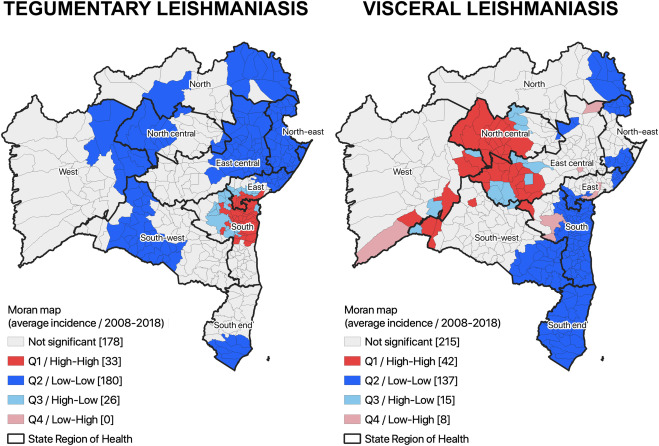
MAO – Spatio-temporal distribution and contributing factors of tegumentary and visceral leishmaniasis: A comparative study in Bahia, Brazil
Anaiá da Paixão Sevá, Liang Mao, Fredy Galvis-Ovallos, Karenina Melo Miranda Oliveira, Francisco Bruno Souza Oliveira, George Rego Albuquerque
Article first published online: 23 August 2023
DOI: https://doi.org/10.1016/j.sste.2023.100615
ABSTRACT: Tegumentary (TL) and visceral (VL) leishmaniasis are neglected zoonotic diseases in Brazil, caused by different parasites and transmitted by various vector species. This study investigated and compared spatio-temporal patterns of TL and VL from 2007 to 2020 in the state of Bahia, Brazil, and their correlations with extrinsic factors. The results showed that the total number of cases of both TL and VL were decreasing. The number of municipalities with reported cases reduced for TL over time but remained almost unchanged for VL. There were few municipalities with reported both diseases. Statistical analysis showed that local TL incidence was associated positively with natural forest. Local VL incidence was associated positively with Cerrado (Brazilian savannah) vegetation. This study identified different patterns of occurrence of VL and TL and the risk areas that could be prioritized for epidemiological surveillance.
Read the full publication in Spatial and Spatio-Temporal Epidemiology.